#greek Egypt
Text
Julia Caesaris is so overlooked it makes me wanna scream. She managed to have a happy marriage in a time when that just wasn't much of a thing. Given Cleopatra spent 3 years as a tween in her house we can only assume she mentored the future Pharaoh or at the very least provided tons of information on the Caesars given that's her gens and Julius is her dad so you just know Cleopatra sponged up all this info and used it a few years later when she went to Caesar for help. She was a patroness of the arts and got her husband into them and her death changes the entire course of western history.
Like her death has a greater impact on our world today than Cleopatra's did but absolutely no one talks about her
#ancient rome#roman history#roman empire#julia caesar#julius caesar#pompey#ancient history#ancient egypt#greek egypt#egypt#cleopatra#ptolemies#ptolemaic egypt#caesar#caesarion#caesarians#julia caesaris#julia#julia daughter of Caesar#actium#how often do you think about the roman empire#pharaohs#Ptolemy auletes#auletes#Pompeius Magnus#gnaeus pompeius magnus#pompey the great#magnus#the new Alexander#gnaeus pompey
43 notes
·
View notes
Text
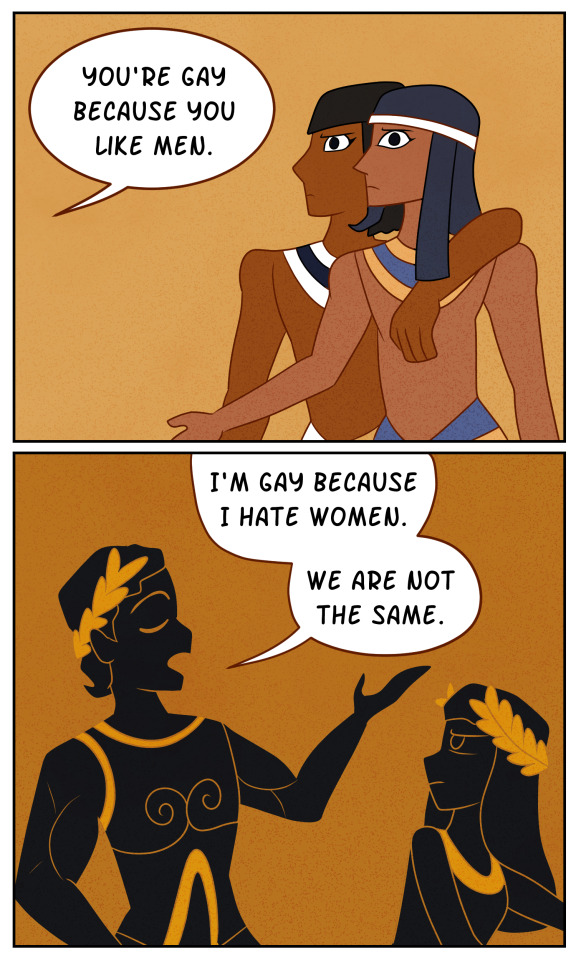
This seems to be what I've learned.
180K notes
·
View notes
Text
You really should know about Storm "Daniel"
Unlike how much all of us Greek blogs notify our tumblr communities about the regular (at this point) arsons wildfires afflicting Greece, we did not say much about the floods the country has been suffering from right now. There was a mention here and there and I even made a joke post as the storm was starting but not a lot of stuff in general. So, I think there's a couple of things you should know and I feel like I could address about it and actually it's not just about Greece. So I believe this could interest a lot of people and it should be something known worldwide.
In the beginning of September there was an alarm about an extreme weather phenomenon forming above the Ionian Sea at the west of mainland Greece. In truth, the phenomenon was not caused by the climate change. It was just a very rare occurence where a high pressure atmosheric system was sandwiched between two currents of low pressure. Low pressure systems are the ones resposible for stormy weather while high pressure systems generally create stable weather. As the low currents encircled the high pressure system, the storm that had started forming became unusually stable for a storm. As a result, the storm moved northeast above Thessaly and other regions of the central part of Greece and... just decided to stay there for an indefinite amount of time. Furthermore, because it's September and the Ionian Sea had warmed up throughout the summer, the medicane (Mediterranean cyclone) gained tropical features as it was forming, pushing its intensity to extremes unknown to this area.
The storm remained above all of central Greece for about 4-5 days but at the meantime it was causing side-storms in neighbouring countries, such as Bulgaria and Turkey. Both countries suffered from floods causing damages and deaths.

Istanbul, Turkey (CNN).
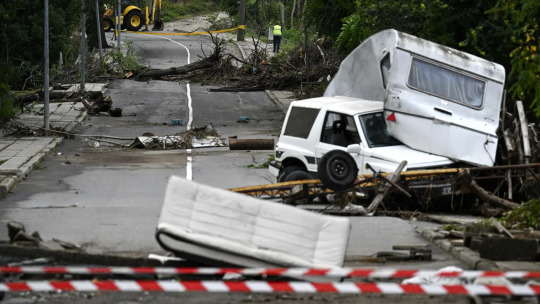
Tsarevo, Bulgaria (CNN).
Four people died in Bulgaria and seven in Turkey.
But like I told you the core of this was exactly on top of Greece's central mainland and islands. So what happened there? I happened to experience this shit first hand. My recollection of it is that it was unlike any other storm I had experienced before. My knowledge on meteorology is not very advanced, however I believe due to the high pressure part, there were actually no winds at all - or they were insignificant, so it wasn't like what you might have in mind as a conventional cyclone. It was a rainstorm but it was like a rainstorm from hell. The crucial part is that in Greece summer violent rainstorms may last for about five minutes but certainly not for five days nonstop. There was no pause, not even for a second. It kept pouring and pouring in indescribable volumes, without decreasing or slowing down, not for a moment. The fourth day it started taking short breaks.
As a person with a phobia of lightnings since childhood, I kept wearing earplugs throughout all these days. For four days, ten seconds did not pass without at least one lightning shrieking exactly on top of our heads. In the end, I am dead serious, I think my lifelong phobia has been cured somewhat due to this extreme exposure that eventually had a numbing effect. I think only the first day there was a record of 7,000 lightnings. I believe there must have been dozens of thousands overall. The lightnings also caused fires but the downpour was so overwhelming no fire could ever stand a chance.
Whether during or after the rains, what I was seeing outside was post-apocalyptic. The only thing missing was the zombies. It really looked like a background from a videogame, including a constantly lit up sky. I was not in danger though people dear to me were. The worst for me was a huge fall in the quality of living but that doesn't matter. The rains caused severe destructions across cities and villages. They caused floods, they broke bridges, they broke a massive number of roads, they made walls collapse, they destroyed springs, they damaged water and electricity outlets entirely, they drowned flocks and flocks of animals, they destroyed mountainous and coastal villages alike, they made cars float and fly over each other and they uprooted houses.

Village in Mount Pelion, Greece.
But that's not the end of it. Four days later, the storm moved southwest towards the Ionian sea, basically to the place of its original formation. It side-swept over Athens in the meantime, flooding the city, but that doesn't mean much since I could cry and Athens would still flood with my tears. Anyway. AFTER the storm left, the floods caused by it started multiplying and expanding. Picture that: a crystal clear sky, a bright sun and your phone screaming state alerts about evacuating your village or town because a lake has launched at you! Here's the thing: Thessaly is a massive plain surrounded by a ring of mountains. Half of those downpours fell right on the lowlands causing floods and destructions the first days. The other half however fell on the mountains, filled the streams heading down and they all met up and filled the lakes and the large river of Thessaly, Pineios and they all basically exploded the next days. Pineios especially exploded both in its western and eastern part, sinking the entirety of Thessaly's plains under water. As a result, floods were actively taking place days after the storm had ended and the weather was good. The phenomena have only started subduing since yesterday.

The overflowing of the river, trapped by the mountains.
Farmers won't be able to work this year and next year is questionable as well. There are huge concerns about various epidemics breaking out as more and more dead animals are found in the waters. Entire villages are under the water. There are estimations that some villages in west Thessaly might have been lost forever and their residents will have to move elsewhere. Sixteen people have died from the rainstorm and the floods.


Actual villages in Karditsa, Greece.
A more longterm danger is that the ground received such an unnatural amount of water that it might have been severely eroded and destablised, making it vulnerable to natural disasters I don't want to utter. Many roads are either broken or bloated and Thessaly has been cut out from communication and transportation with the rest of the country. To this day, there are maps guiding people how to drive from North to South Greece and vice versa by entirely skipping Central Greece! (Hint: they will have to drive through Epirus, aka western Greece.) The first days there was also complete isolation from what was happening in the country and the world and also the very regions we were in as we had no electricity and our only chance was getting a call from somebody being elsewhere and telling us what is going on.

Volos, Greece (CNN)
Many regions have received within 2-4 days 55 times their monthly amount of rain or more than twice the yearly amount. Greek meteorologist Christos Zerefos estimated that such a phenomenon occurs every 300-400 years. Meteorologists were alarmed internationally - with Germans and Americans reportedly saying they hadn't studied such a phenomenon again in their career. Its intensity was record high in the history of Greece and right in the top of Europe's as well. They also agreed that such a phenomenon would be devastating even if it had hit the most advanced and prepared country.
BUT THIS IS NOT THE END. The weakened Daniel seemed to slowly move towards South Italy but it decided to take a turn and headed south towards Libya and Egypt. Quite possibly, as the storm was once again travelling across the warm Mediterranean Sea, it was rejuvenated and gained even more tropical traits. Eventually, the medicane hit Libya with unprecedented force.

The cyclone travelling from Greece to Libya.
The toll it took on Libya is unspeakable. As I am writing this,
More than 5,226 people are killed and more than 10,000 are currently missing.
Like, can you wrap your head around what I am talking about? I don't see this shit being acknowledged enough across the world. I am checking this again and again, to ensure I am reading this correctly.
Daniel has officially become the deadliest medicane on record.
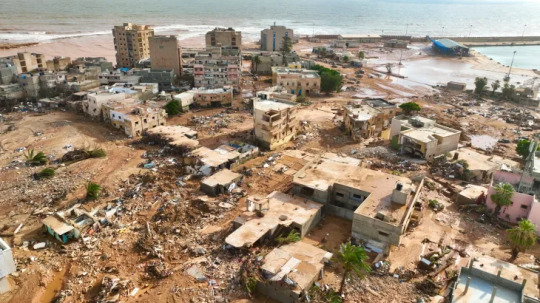
Eastern Libya, from Al Jazeera.
In the meantime, Greeks found opportunities to practice their favourite sport: political infighting. People who weren't even here when hell broke loose say that if this or that was properly done, we would not have problems at all. I even saw an idiotic Greek expat comment how "we got drowned in a little bit of rain". The truth is we should bloody thank our lucky stars and I say this with the entire awareness of half of Thessaly being currently underwater. It is true that Greek governments and people have done so many things badly, like building on top of streams and rivers, changing rivers' natural route, drying up natural lakes and all that shit that guarantees you are going to have massive problems once a serious storm breaks out. Also, the disaster revealed that there was once more a very questionable management of all the money given by the EU for anti-flooding measures after a previous flood (Ianos). Of course, I would be happy if at last we viewed this disaster as an opportunity to improve ourselves and the management of our land, however whatever happened these days wasn't the fault of anyone in particular. On the contrary, A LOT worse could have happened. A lot. Maybe Libya is not an indication because if Greece is not used to such extreme rain phenomena, then Libya is probably ten times less used to them, however we should not forget that this monster was STUCK at least five days over the heartland of Greece. For this alone we should damn be thankful we did not get it any worse and that the land endured in any way and of course now we have to correct old mistakes as well but let's do it united and determined and without wasting time once more in pointless infighting, which in this case might even be unfair. (In fact I think the thing we should blame the state the most about was not making it clear beforehand that this was going to be unprecedented, not just "very severe". They probably didn't want to cause panic and mayhem but still. We should know.) Of course I am not talking about how the state will treat the afflicted regions from now on, which is entirely its responsibility. And we should stand next to Libya. Greece has its wounds to mend but it should absolutely provide support to Libya. We know what this freak phenomenon was like.
I know this text is long but please consider reblogging this. We should know what happens on our planet. Thousands of people are dead from a freak phenomenon devastating regions across lands and seas. Also forgive any mistakes I might have made although I believe the information is correct for the most part. I didn't speak more about Libya because I don't know enough to analyze the situation as much. Perhaps there are ways of supporting the country too. As a last note, this phenomenon was not freakish because of the climate change - it was just a very unusual occurence. However, the - otherwise normal - warmth of the sea did feed and intensify the storm and the climate change might in the future cause these super rare, accidental phenomena to become more frequent.
#greece#libya#weather#climate change#storm#rainstorm#cyclone#flooding#natural disasters#world#tw death mention#world news#europe#africa#turkey#bulgaria#egypt#maps#storm daniel#greek facts#greek news#news#tw long text#tw long post#tw long#signal boost
783 notes
·
View notes
Text

every day i learn something new about this world <3 something completely false and racist but new nonetheless <3 keeps life fresh and exciting!
#actually egypt stands for extra gay yaoi pussy time. like a wise blog once said.#ANYWAY. 'what did you bring' would be 'gypt eh' not 'eh gypt'#and also the name egypt comes from the greek name for us. which predates the arabization of egypt.#also what egyptians called egypt used to be kemet and now masr. literally no arguments made here shskdike
209 notes
·
View notes
Text

Manticore tries to flirt with a sphynx. He's trying his best, okay?
#sphynx#sphinx#mantikor#manticore#creaturedesign#mythological creature#egypt mythology#digitalart#digital painting#character design#drawing#greek mythology#mythology#chimera#hybrid
352 notes
·
View notes
Text
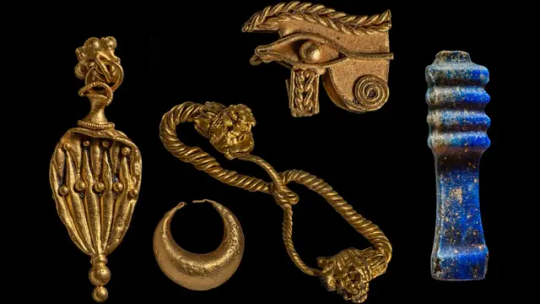
Sunken Temples of Aphrodite and Amun Found off Egyptian Coast
New discoveries off Egyptian coast reveal ‘treasures and secrets
New “treasures and secrets” have been revealed at the site of a sunken temple off Egypt’s Mediterranean coast, the European Institute for Underwater Archaeology (IEASM) announced in a news release Tuesday.
An underwater archaeological team, led by French marine archaeologist Franck Goddio, has made further discoveries at the site of a temple to god Amun in the ancient port city of Thonis-Heracleion in the Bay of Aboukir, the institute said.
The team investigated the city’s south canal, where huge blocks of stone from the ancient temple collapsed “during a cataclysmic event dated to the mid-second century BC,” the institute said.
The temple to god Amun was where pharaohs came “to receive the titles of their power as universal kings from the supreme god of the ancient Egyptian pantheon,” it said.
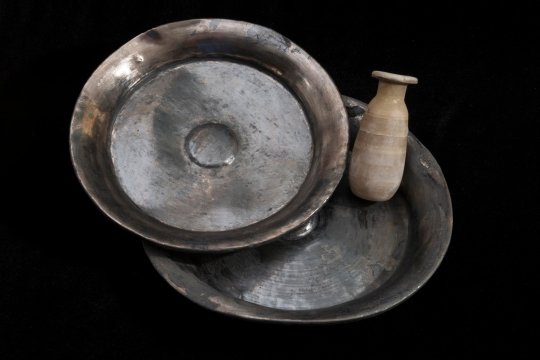
“Precious objects belonging to the temple treasury have been unearthed, such as silver ritual instruments, gold jewelry and fragile alabaster containers for perfumes or unguents,” IEASM said. “They bear witness to the wealth of this sanctuary and the piety of the former inhabitants of the port city.”
The archaeological excavations, conducted jointly by Goddio’s team and the Department of Underwater Archaeology of the Ministry of Tourism and Antiquities of Egypt, revealed underground structures “supported by very well-preserved wooden posts and beams dating from the 5th century BC,” the institute said.
“It is extremely moving to discover such delicate objects, which survived intact despite the violence and magnitude of the cataclysm,” said Goddio, who is president of IEASM and director of excavations.
The discoveries were made possible thanks to the development and use of new geophysical prospecting technologies that can detect cavities and objects “buried under layers of clay several meters thick,” the institute said.

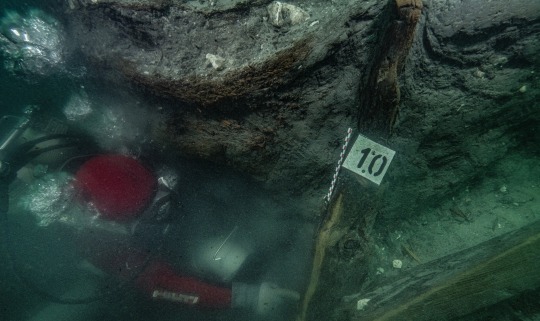
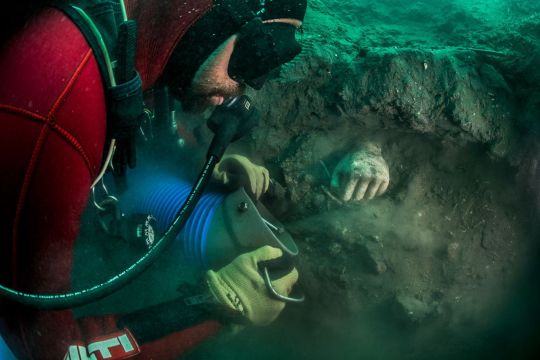
Relics from Greek presence, too
East of the Amun temple, a Greek sanctuary devoted to Aphrodite was discovered containing bronze and ceramic objects.
“This illustrates that Greeks who were allowed to trade and settle in the city during the time of the Pharaohs of the Saïte dynasty (664 - 525 BC) had their sanctuaries to their own gods,” the institute said.
The discoveries of Greek weapons also reveal the presence of Greek mercenaries in the area, IEASM said. “They were defending the access to the Kingdom at the mouth of the Canopic Branch of the Nile. This branch was the largest and the best navigable one in antiquity.”
The remains of Thonis-Heracleion are now located under the sea, 7 kilometers (4.3 miles) from the present coast of Egypt, IEASM said. The city was for centuries Egypt’s largest port on the Mediterranean before the founding of Alexandria by Alexander the Great in 331 BC.
“Rising sea levels and earthquakes followed by tidal waves triggering land liquefaction events, caused a 110 square kilometer portion of the Nile delta to totally disappear under the sea, taking with it the city of Thonis-Heracleion,” the institute said.
The city was discovered by the IEASM in 2000.
By Radina Gigova.
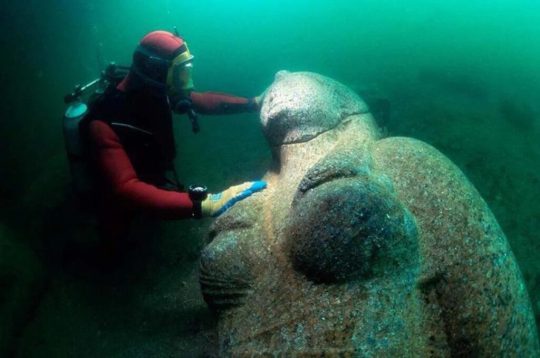
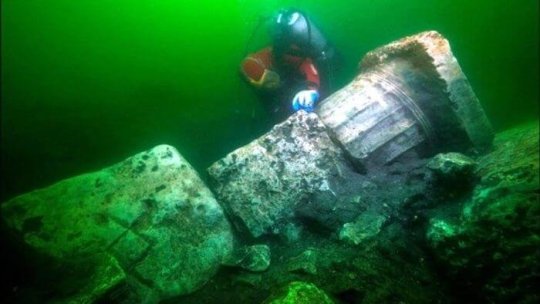
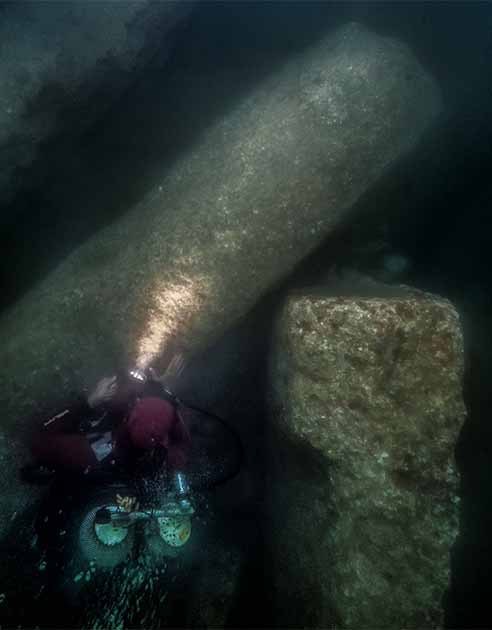
#Sunken Temples of Aphrodite and Amun Found off Egyptian Coast#Thonis-Heracleion#Bay of Aboukir#gold#gold treasure#ancient artifacts#archeology#archeolgst#history#history news#ancient history#ancient culture#ancient civilizations#ancient egypt#egyptian history#egyptian mythology#greek history
279 notes
·
View notes
Text
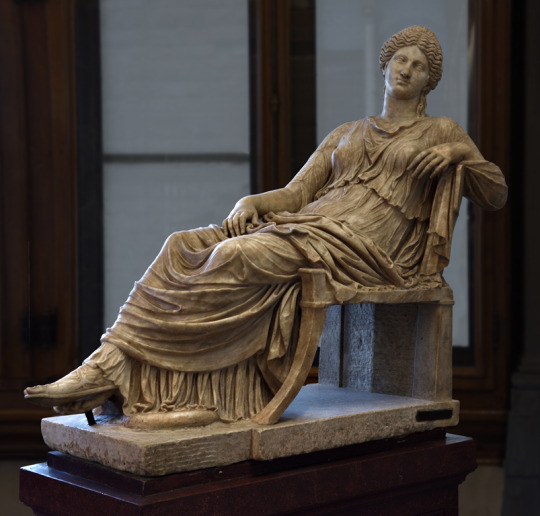

~ Statue of a seated woman.
Date: A.D. Mid-1st. century
Florence, Uffizi Gallery (Firenze, Galleria degli Uffizi)
Medium: Greek Marble
#ancient#ancient art#history#museum#archeology#ancient egypt#ancient sculpture#ancient history#archaeology#statue of seated woman#greek marble
666 notes
·
View notes
Text
Bharani : the birth of Venus.
Part 1

Let's talk about ancient godesses of love and Bharani nakshatra.
I will base my research on the legend of the dead and resurrected god present in many religious myths coming from the middle east (ps : i'm sorry in advance for the grammar, syntax or spelling mistakes that you may find in this post, english is not my first language)
Bharani, situated in the heart of the rashi of aries is governed by Shukr: Venus but also by Yami and Yama in vedic mythology who are twins and gods respectfully of life and death.

Yama, the main deity of Bharani is said to be one of "8 celestial gatekeepers, who guards eight directional doorways or exits through which souls travel from an earthly plane to other planes of existence" making him the lord of Dharma since at one's death, he decides basing on his actions in what plane should one reincarnate.

Since Yama is responsible for directing the flow of life on Earth the association between bharani and the yoni becomes evident: the female reproducting system serves as a portal for souls to take on a physical form. So bharani as Claire Nakti perfectly described it relates to the feminine ability to receive, hold, nurture and ultimately transform through the womb.
Because Bharani aligns itself with all the feminine qualities by excellence it makes sense as to why Venus is it's ruler.
Venus is the roman name for the goddess Aphrodite: in greek mythology. She is said to be the goddess of love and beauty at large but also the goddess of war and sexuality. First because the ancient greeks saw the duality that links love to war and how they seem to come together through sex.
Also, Aphrodite is said to be born from the sperm of Ouranos when his testicules got cut by his son Saturn as he was always feconding Gaia, the Earth and causing her distress: he was acting cruel regarding their children. The sperm of Ouranus got mixed up with the foam of the Ocean creating Aphrodite which means "risen from the foam". So it was interesting to see that as Shukr also means sperm in sanskrit and it shows the origin of Venus as a fertility goddess too.

This conception of Aphrodite directly links her to ancient goddesses of love such as Ishtar or Inana in Mesopotamian/summerian mythology or Isis in egyptian mythology. Most of the time, these goddesses are the female counterpart of a god that was once mortal, got cursed, died and then came back to life for them to form an immortal couple.
In the case of Ishtar, her consort is Dumuzi or Tammuz and Osiris is the consort of Isis.
In Mesopotamian mythology :
Ishtar or Inana in sumerian is the goddess of love and sexuality, beauty, fertility as well as war because of her status as a " bloody goddess" mostly refering to her character in plenty of myths.
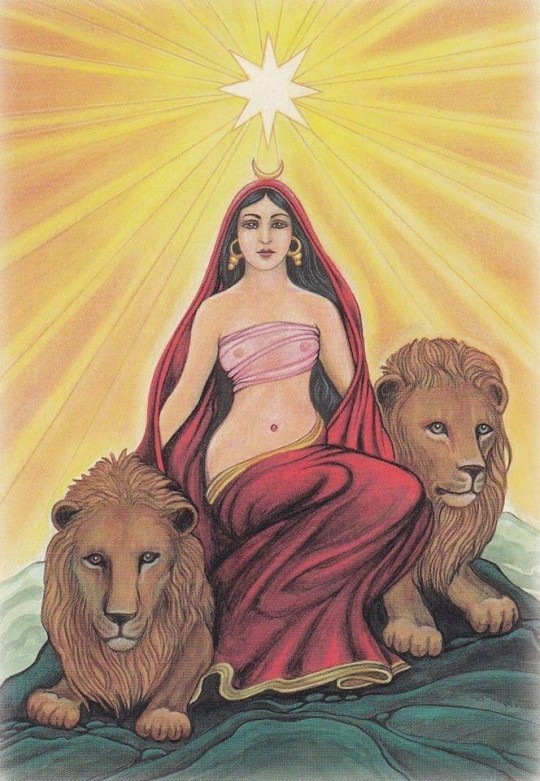
For example: in one story, she became infatuated with the king Gilgamesh, but the latter knowing her fierce reputation, refused her advances. As a result she got furious and unleashed the celestial Bull on Earth which resulted in 7 years of plagues. This celestial bull was later defeated by Gilgamesh and Endiku, and its corpse was throwed in front of Inana. Blinded by rage, she decided that as a punition Enkidu must die and sad at the death of his bestfriend Gilgamesh began his journey to find a cure to Death.
Bharani is a fierce or Ugra nakshatra meaning that its nature is agressive, bold and assertive in pursuing their goals. They are ruthless in the process of accompling what they desire the most and are inclined to extreme mood swings that can result in them to be "blinded" by their extreme emotions perfectly expressing the passionate character of Venus and her other equivalents in differents pantheons of antiquity.
Inana/ Ishtar's story with Dumuzi/Tammur begins as she was convinced to chose him by her brother Utu. Then she got married with the shepphard Dumuzi instead of whom she prefered in first the farmer: Enkinmdou. During the courtship, Inana prefered the fine textile of the farmer and his beer rather than the thick wool and milk of Dumuzi. The preference for the shepphard illustrates that at the time the Mesopotamian civilisation was known for their proliferent agriculture with the egyptians in the region, so this myth encapsulate the opposition between nomads and sendatary people at this specifific time period.

By the way, another symbol of Bharani is the cave and traditionnaly, the cave was used as a storage room for food. Also Bharani's purpose is Artha so these individuals are motivated to accumalate resources and provide safety and security, so Bharani can be linked to the exploitation of natural ressources like the soil illustrating the preference of Ishtar for the farmer. This is reinforced also by its Earth element.
So coming back to the myth, in a mesopotamian text called Inana's Descent to the Underworld, the goddess goes to Kur (hell) with the intent of conquering it, and her sister Ereshkigal who rules the Underworld, kills her. She learns that she can escape if she finds a sacrifice to replace her, in her search, she encounters servants who were mourning her death however she finds Dumuzi relaxing on a throne being entertained by enslaved girls. Enraged by his disloyalty she selects him as a sacrifice and he is dragged to the Underworld by demons.
He is eventually resurrected by Inana and they become an "immortal couple" as he may only come back to life for half of the year, being replaced by his son (?) who is also his reincarnation for the other half of the same years, so describing the cycle of regeneration of life.
Other mythologycal stories of goddesses in the near east describe a similar patterns:
The goddess Asherah is described as being the mother and the lover of her son Adonis.
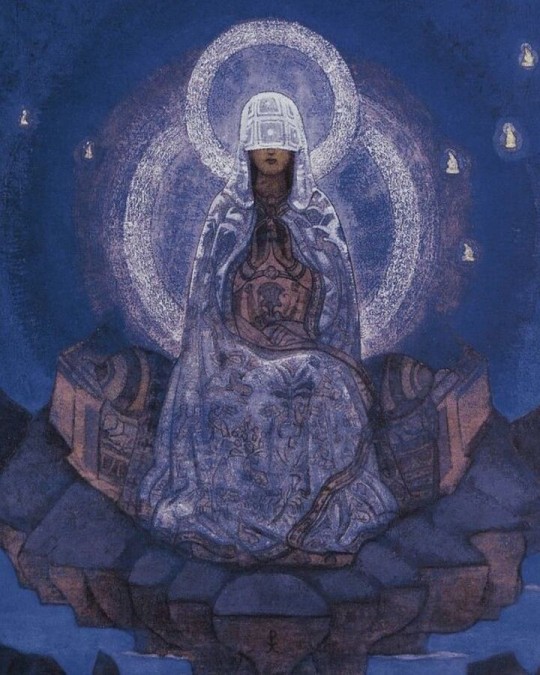
The goddess Cybele in the phrygian pantheon takes the form of an old woman as she described as the mother of everything and of all. And at the same time she is the consort of Attis who his her own son (wtf ?)
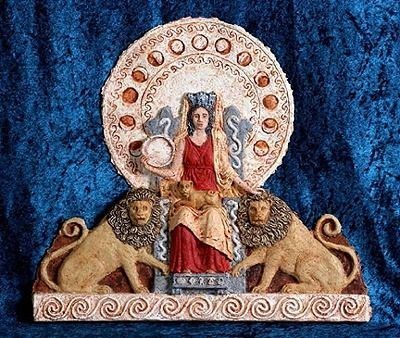
Also, Yama and Yami are implicated in a incestuous entanglement where his sister Yama wanted to lay with him however he refused establishing himself as a god with an infaillible moral campus.
All of these representations illustrate the relation between the masculine and the feminine, life and regenration which are all topics related to Bharani nakshatra. Women by their capacity to give life are seen as the source of life and therefore are eternal as they are able to regenarate themselves through daughters which are identical to them whereas man who is unable to reproduce by himself, is therefore mortal feels the need to associate with her to resurrect through a son who is identical to him. Bharani exiting as the embodiment of the link between "the father and the offspring" which is the feminine vessel.


So this is certainly part 1, I think that these ancient myths are where Claire Nakti found her inspiration for her series on Bharani.
#vedic astrology#cinema#coquette#astrology#vintage movies#aesthetic#coquette dollete#fashion#vintage#movies#greek mythology#roman mythology#ancient egypt#bharani#chitra nakshatra#purva bhadrapada#purva phalguni#cowboy carter#venus#adonis
105 notes
·
View notes
Text
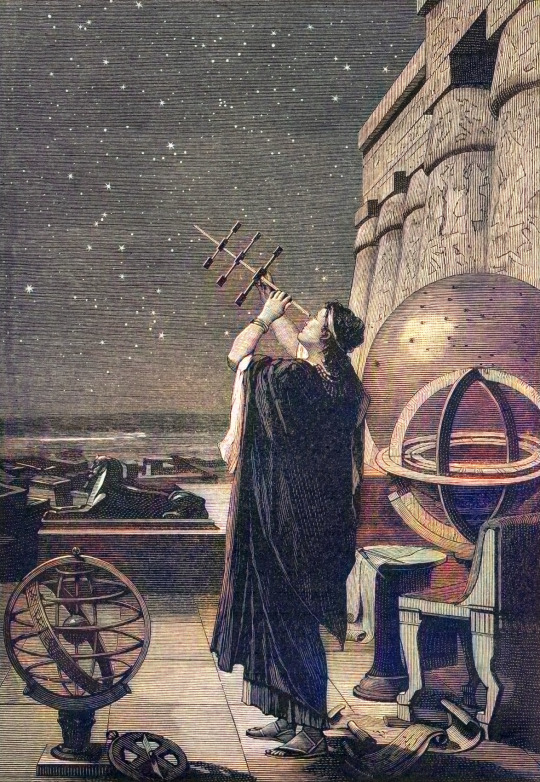
The Observatory of Alexandria with an astronomer measuring the heavens with some instruments (cross staff, mariner’s astrolabe) which actually belong to a much later period (source: Camille Flammarion, L’Astronomie Populaire: Description générale du ciel, Paris: 1880).
#observatory#astronomy#alexandria#art#camille flammarion#celestial#skies#stars#cosmos#heaven#ptolemy#hypatia#plato#astronomer#astronomers#history#egypt#antiquity#ancient#ancient greek#ancient greece#ancient egypt#greek#european#cosmology
1K notes
·
View notes
Text
The top 1% of human society could easily solve climate change and world hunger, but instead they hoard their money and go on damned trips to the Titanic. This is why we need to eat the rich. They don't care about us, so we shouldn't give a fuck about them. 🤷
#eat the rich#fuck billionaires#we can do more#what about the migrants#greek migrant boat#pakistan#egypt#syria#palestine#afganistan#social justice
250 notes
·
View notes
Text
About the Development of Myths

Okay, I will talk about more of the specific gods tomorrow again (starting first with the other gods from Stray Gods and then just looking over a variety of gods - I might start just with the greeks and then... venture into other mythologies). But first let me talk about the entire basis of what I have been talking about so far with the origins of Pan and Persephone: Their mythology is not a fixed thing.
Something that I would say education in general really fails on is properly expressing the amount of changes that cultures go through. I wrote about this before just in terms of history: There is not THE middle ages, not THE ancient Egypt, not THE ancient Greece and so on. All of those historical periods lasted for at least a thousand years. Now imagine that in like 500 years someone goes and looks at the 20th and 21st century as: "The World War and Globalisation period". Which I think there is a good chance this will at some point be known at (assuming we do not manage to eradicate our species before that, that is). Yet, you and I both know that if we were talking to someone from 1923 there would be very little we had in common.
Sure, this effect got massively accelerated thanks to the internet. But... You gotta have to assume that the Roman dude from 100 BC would also live in a very different world from the Roman dude of 200 BC. Because a hundred years is always going to involve a lot of change.
The reason we look at those old cultures as unchanging is, that they do not change anymore. And everyone who is neither working with that kinda stuff, nor is a complete geek, will just look at that culture as ONE FIRM THING rather than something fluent.
This is also true in terms of religion and related traditions, though we in the west are even more prone to it than other cultures. Because we do assume Christianity as this one thing. And the bible as this one unchanging thing. Hence the core believe is the same and, so the reasoning goes, was always the same. In fact, if you went to a religious school it is kinda how you were taught. The bible is one thing and always was the same thing. Only... It wasn't and even the basic we hve now does not matter.
Just look at the many Christian subreligions. They all in some way or form believe in Jesus, the one big God and all of that - but what they take from that widely differs. And the bible really does not have a big impact onto what ideals they hold and how they hold mass and how they pray and what not. If you think about it, you will easily see that, right? And if you just look a bit into what you might have learned about history in relation to Christianity, you will also know that this has changed. The role of Jesus has changed. How much the Holy Spirit is looked upon as an active actor. Which saints get venerated. All of that has changed a lot in just the last 50 years. And has changed a ton between the different countries.
And what I now need you to keep in mind that this was the exact same with the Ancient Gods and the religion attached to them. That holds true for the Greek Gods, the Roman Gods, the Egyptian Gods, the Norse Gods... all of them. The way they were worshipped changed over those thousand(s of) years they were worshipped.
So, let me once again talk about the Proto-Indo-European culture. Which is always a doosy and I love it.
The Proto-Indo-Europeans originates probably in the areas of modern day Ukraine and/or Romania and/or southern Russia some time around 5000 BC (scholars argue a bit about the exact temporal placement, just that it was somewhere between 7000 BC and 4000 BC). We do not really know a lot about them, because they did not write stuff down. But we do know that they had horses, were patriarchal, and that they worshipped a polytheistic pantheon that at least involved a Sky Father as one of the highest gods, who controlled the weather and was especially associated with storms and lightning.
These Proto-Indo-Europeans started breaking apart and travelling. Some into Asia, some into Europe and the Arabian/Persian areas. They brought with them their language and religion.
Now, it should be noted that they were not the "original humans" or anything. And that whereever they went... in most areas there were already other people living there, with whom they intermingled. Also whatever land they ended up settling was different, had different environments and this was included into their religious practice. Which made their religion over the years differ bit by bit. So from their pantheon sprang a lot of the pantheons we know today.
But... again, a lot of places they settled had already people living there. Who had their own worship. And that stuff often was also included and merged. Sometimes those other worships were very far reaching, sometimes very local. But some of those deities were picked up and either made part of whatever pantheon was there to come or was merged with an already existing god. And this happened again and again during the time that whatever pantheon was prayed to.
How do we know that, if it was not written down?
Well, mostly due to some archeology, but mostly due to comparative mythology and comparative linguistics. Two fields of science that basically involve people going over a lot of languages or mythologies (which, by the way, at times also includes fairytales and other oral narratives that are not necessarily held as "true", but still told) and basically finding things the reoccur. As well as going back over whatever written stuff we do have and noticing the shifts happening between a text written in 600 BC and a text written in 200 BC.
Now, for all the stuff we have two things that help a lot: a) The old Hindi writings and b) the written stuff from Egypt. Because both go really far back and were very well documented in writing. So basically we always can compare stuff to that and see shifts more clearly.
But, yeah... Technically all the pantheons are very much related. At some point Zeus, Jupiter, Diespiter, Thor, Tinia and Tian originated from the same character. You can even kinda see it in how similar the names are. Susanoo in Shinto-Mythology probably came from this, too, at least in the iteration we actually know about. (There can be some arguments made that a lot of the Shinto gods were shifted through the Buddhist contact, as the original indigenous Japanese cultures were very likely not Indo-European in origin. But given that the Ainu are the only culture whose oral tradition managed to survive this long, while the others either vanished or merged in a way influenced by Buddhism, which comes from Indo-European culture... yeah, it is there now.)
So, what I am saying: Mythology is shifting and always has been shifting. Same goes with religion. Hence the evolution of the Greek Pantheon.
Fun fact: Through comparative mythology we can also find the origins of YHW, the Abrahamitic god. Or God, as you might know him. He is a fascinating one, as he probably started out as a local god associated with harvest and weather in Southern Egypt and was then picked up by the Semitic cultures. He got a more pronounced role in the Canaanite pantheon, where at some point he merged with Baal, the war god. And through some trials and tribulations he finally ended up merging with El(hoim), the top god of the pantheon, with a part of the Canaanites splitting from the culture and developing into what would become the Jewish culture.
Super fascinating stuff. I love it.

#stray gods#hades#history#mythology#proto indo european#early history#neolithic#ancient greece#ancient rome#ancient egypt#greek mythology#christian mythology#egyptian mythology
158 notes
·
View notes
Text
I don't know about pre-Greco Egypt but let me just say the Ptolemies out here making the 18th century French aristocracy look nice
"The Ptolemies reorganized her agriculture to yield the absolute maximum, taxed it so that the peasant was left just enough of his harvest to live on, put the rest in the silos at Alexandria, and exporting it all over the Mediterranean pocketed the proceeds."
The Ancient Mariners by Lionel Casson
#ptolemies#ancient egypt#classical egypt#ptolemy#greek Egypt#greeks#greek culture#greek history#ancient Greece#ptolemy the great#greedy greeks of history#mediterranean#trade routes#egypt#egyptology#call me Evie Carnahan
1 note
·
View note
Text

A prince of the Ptolemaic dynasty represented as the god Hermes. Sardonyx cameo by an unknown artist, ca. 250 BCE. Now in the Cabinet des médailles, Bibliothèque nationale de France, Paris. Photo credit: © Marie-Lan Nguyen / Wikimedia Commons /
CC-BY 2.5
#classics#tagamemnon#Ancient Greece#Hellenistic period#Ptolemaic Egypt#Ptolemaic dynasty#art#art history#ancient art#Greek art#Ancient Greek art#Hellenistic art#Ptolemaic art#jewelry#jewellery#cameo#glyptics#gemwork#sardonyx#Cabinet des médailles
73 notes
·
View notes
Text

Stone scarabs found in Eivissa (Ibiza), Balearic Islands. 5th-4th century BC.
The island of Eivissa has provided a large number of this type of amulets, especially in funerary contexts, accompanying buried people. They were made by the Punic, Greek and Etruscan craftmen in Egyptian, Oriental and Hellenic styles. Worn in contact with the body, they kept evil away or propitiated good, in accordance with their magical-religious beliefs.
Photo: MAEF Archive. Source: InterMedit Project.
#eivissa#illes balears#història#arqueologia#ancient#antiquity#archeology#archaeology#ancient history#history#mediterranean#ancient egypt#ancient egyptian#ibiza#art history#amulet#punic#ancient greek#etruscan
400 notes
·
View notes
Text

Sir Lawrence Alma-Tadema (Dutch-British, 1836 - 1912)
The Finding of Moses, 1904
#Sir Lawrence Alma-Tadema#Sir Lawrence Alma Tadema#1800s#the finding of moses#greecian#greek#nubian#egypt#egyptian#ancient history#ancient world#classic art#art#fine art#european art#classical art#europe#european#fine arts#oil painting#europa#mediterranean#the bible#pharaoh's daughter#arts#painting#artwork
81 notes
·
View notes
Text
im dirt poor, don't judge the watermark ok
#my art#fanart#animatic#animation#art#i guess..#first animatic#dont judge#plsss#the song of achilles#tsoa#the iliad#the prince of egypt#greek mythology#patroclus#patrochilles#achilles#odysseus#the odyssey#um#yup#greek heroes
147 notes
·
View notes